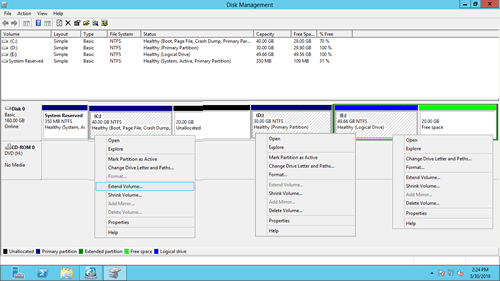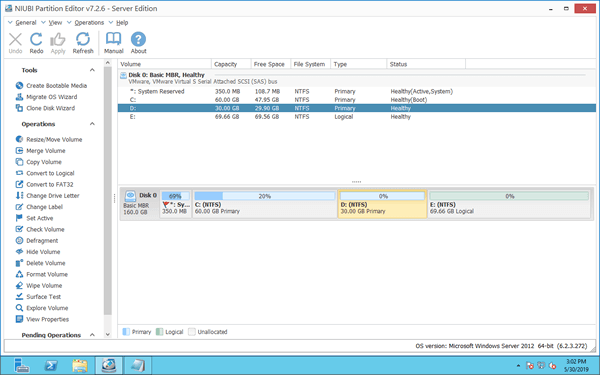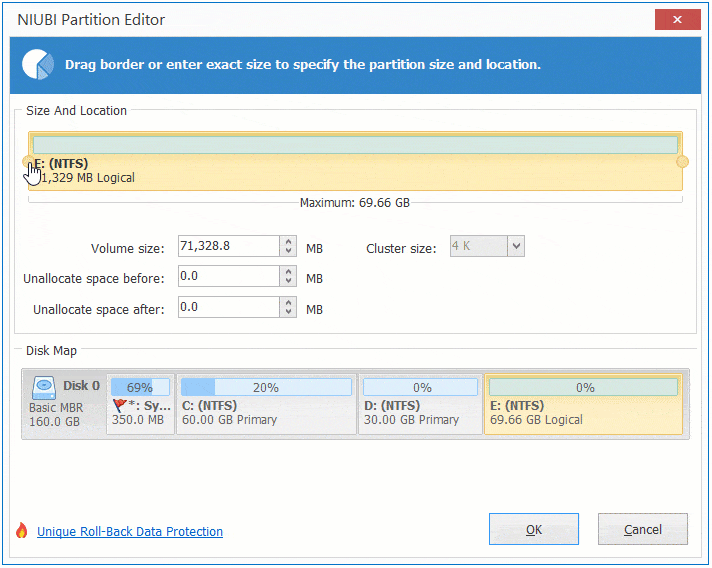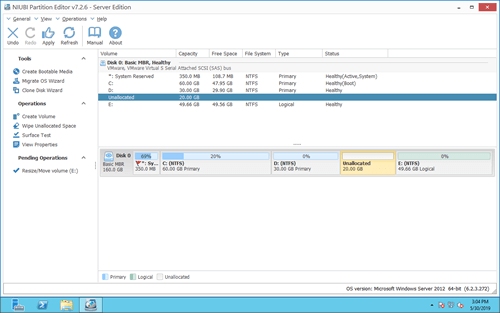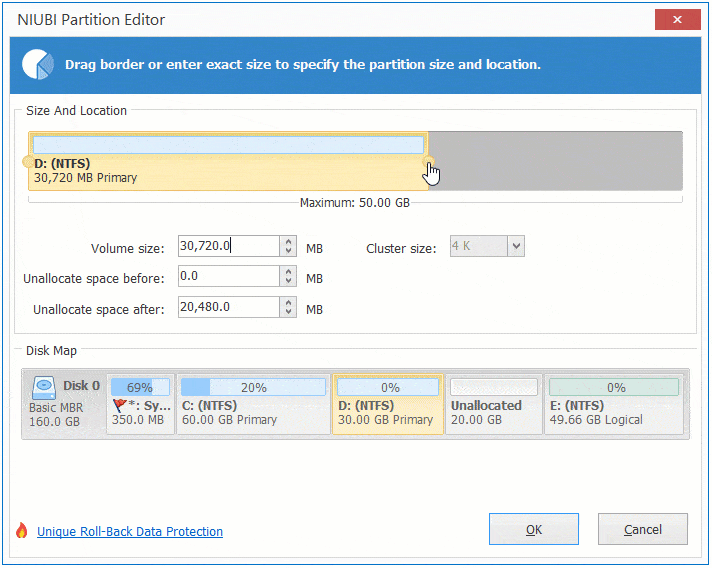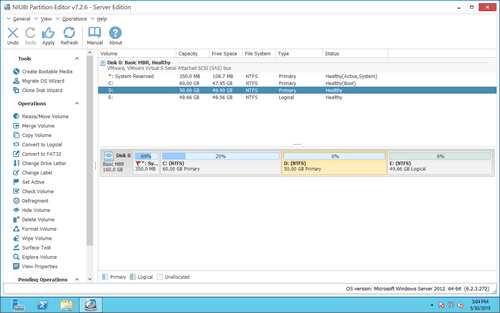In many servers, the D: drive is used for programs and some Windows services. If you didn't create it large enough or use it correctly, it may run out of space. In that case, you can try to increase D drive space without losing data. This article introduces four options to extend D drive on Windows Server 2012/2016/2019/2022 without data loss. Choose the appropriate method based on your disk partition configuration.
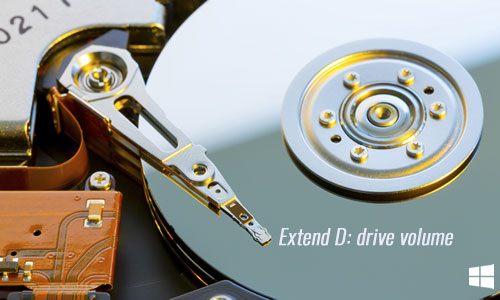
1. Extend D drive in Disk Management
This method is only used when there is an adjacent partition on the right of D: drive and it can be deleted.
The size of a physical disk is fixed. Before extending a partition, there must be unallocated space on the same disk. To create this space, you can either delete or shrink another partition. Shrinking a partition will convert only part of the free space into unallocated space, while keeping all files intact, making it a better option than deleting the partition.
Windows' built-in Disk Management offers the "Shrink Volume" and "Extend Volume" functions to help resize partitions without losing data. However, you cannot extend the D: drive by shrinking other volumes with this tool, because:
- The "Shrink Volume" function can only shrink a partition to the left, creating unallocated space on the right side.
- The "Extend Volume" function can only combine unallocated space to the adjacent partition on its left.
As shown in the screenshot, the "Extend Volume" option is always grayed out for the D: drive after shrinking both the left partition (C:) and the right partition (E). Therefore, the only way to extend the D: drive in Windows Server 2012 Disk Management is by deleting the adjacent right partition (E).
If there is no adjacent partition (E:) on the right or if you cannot delete it, only third-party disk partition software can help.
2. Expand D drive by shrinking partition E
This method is used when there is an adjacent partition (E:) on the right with plenty of free space.
When there is another data partition on the same disk, you can easily shrink it to create unallocated space and then add this unallocated space to the D: drive.
Download NIUBI Partition Editor, and you'll see all disks along with their partition layout and other information in the main window.
On Disk 0, there are drive C, D, E and a system reserved partition. Original drive D is 30GB and E is 69.66GB.
How to extend D drive on Windows Server 2012/2016/2019/2022:
Step 1: Right click drive E: and select "Resize/Move Volume", drag the left border to the right in the pop-up window. (Or enter an amount in "Unallocated space before".)
Step 2: Right click drive D: and select "Resize/Move Volume" again, drag the right border to the right in the pop-up window.
Step 3: Click "Apply" on top left to take effect. (All operations before this step only work in virtual mode.)
3. Extend D drive by shrinking system partition C
This method is used when there are no other data volumes, but there is plenty of free space in the system partition (C:).
Follow the steps in the video to extend partition D in Windows Server 2012 R2 by shrinking other partitions:
4. Extend volume D with another disk
This method is used when there is insufficient free space on the disk.
You have two options in this case: clone the disk to a larger one and extend the partition with the additional disk space, or copy D drive to another disk.
If you are using any type of hardware RAID array, such as RAID 0, 1, 5, or 10, do not break the array or perform any operations on the RAID controller. The steps to enlarge the D: drive on a RAID array, VMware, or Hyper-V virtual disk are the same as those for a physical disk partition.
No matter how your disk partitions are configured, NIUBI Partition Editor provides a way to extend D: drive in Windows Server 2012/2016/2019/2022. Compared to other software, NIUBI is much safer and faster due to its powerful technologies.
- Virtual Mode: To prevent mistakes, all operations are listed as pending for preview. Real disk partitions are not changed until you click "Apply" to confirm.
- Cancel-at-will: If you apply incorrect operations, you can cancel ongoing tasks without worrying about partition damage.
- 1 Second Rollback: If any error is detected while resizing partitions, the software can automatically revert the server to its original state in an instant.
- Hot Clone: Clone disk partitions without interrupting the server. You can clone the system disk before making changes or as part of a regular backup routine.
- Advanced File-Moving Algorithm: Resize and move partitions 30% to 300% faster, saving significant time, especially when handling a large number of files.

